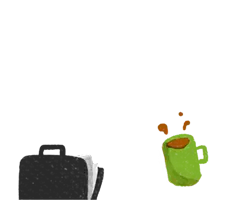Part 4Enforcement and other matters
Inspectors and health and safety medical practitioners: Inspectors
173Power of regulator to authorise making of applications for search warrants
A regulator may authorise a specified person to enter and search a place, vehicle, or other thing for the purpose of ascertaining whether a person has engaged in or is engaging in conduct that contravenes or may contravene relevant health and safety legislation if the regulator is satisfied that there are reasonable grounds—
- to suspect that person has engaged in or is engaging in conduct that constitutes or may constitute such a contravention; and
- to believe that the search will find evidential material in or on any part of the place, vehicle, or thing.
A specified person authorised under subsection (1) may enter and search the place, vehicle, or other thing if—
- the occupier of the place, or the person in charge of the vehicle or thing, (as the case may be) consents; or
- the specified person obtains a warrant under subsection (3).
An issuing officer may issue a search warrant in relation to a place, vehicle, or thing, on an application made in the manner provided by subpart 3 of Part 4 of the Search and Surveillance Act 2012 by a specified person authorised under subsection (1), if the issuing officer is satisfied that there are reasonable grounds—
- to suspect that a person has engaged in or is engaging in conduct that contravenes or may contravene any provision of relevant health and safety legislation; and
- to believe that the search will find evidential material in or on any part of the place, vehicle, or thing.
In this section, specified person means—
- an inspector; or
- an employee of the regulator; or
- any other person who, the regulator is satisfied,—
- is suitably qualified and trained:
- belongs to a class of persons who are suitably qualified and trained to act under this section.
- is suitably qualified and trained:
Despite subsection (4), a constable may apply for a warrant to be issued under subsection (3) without an authorisation from a regulator under subsection (1).
The provisions of subpart 2 of Part 3 and Part 4 of the Search and Surveillance Act 2012 (except sections 118 and 119) apply, with any necessary modifications.


